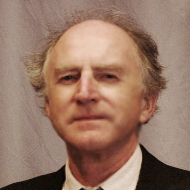Education:
Brno Conservatory - oboe, graduated in 1960 (studied with Frantisek Suchy - oboe, Th. Schaefer and Osvald Chlubna - composition)
Janacek Academy of Music in Brno - oboe, achieved Master's degree in 1964 (F. Suchy)
Janacek Academy of Music in Brno - composition, achieved Master's degree in 1969 (M. Istvan, T. Schaefer)
Employment:
1960 - 1963 orchestra player, Zlín
1963 - 2001 teacher, J. P. Vejvanovsky Conservatory, Kromeriz
1971 - 1973 lecturer (composition), Janacek Academy of Music, Brno
season 1969 - solo oboe player, Austria
Awards:
Special Prize in the International Composer Competition in Skoplje, 1969 - Hospes in terra [op. 26, 1967]
Honourable Mention of Ministry of Culture, 1971 - Quintet [op. 33, 1970]
Leos Janacek's Jubilee Prize 2004 - Moravia [op. 84, 2003]
Pavel Slezak was an oboe soloist up until 1973. His repertory ranged from baroque to 20th century music, including Martinu, Mihalovici, Hindemith, Britten, Bozza, Eben and others. He also premiered many compositions of his contemporaries (F. Suchy, O. Palkovsky, J. Mazourova, R. Ruzicka). He was one of the czechoslovakian oboe school pioneers: he put into practice the use of multiple tongue without any tempo restrictions.
Pavel Slezak started to compose at the age of nine. He was primarily attracted to emotional music (e.g. Dvorak - From the New World, Puccini, Tchaikovsky - Capriccio Italien, Schumann - Träumerei, Schubert - Ständchen, Ave Maria, Offenbach - Barcarola, songs Santa Lucia, O sole mio, La Paloma, Caro mio ben). Later on, he was captivated by Janacek's Diary of One Who Disappeared and Taras Bulba and studied Schoenberg's compositions. Privately, he applied himself to the study of philosophy and psychology. His lifelong passion is the culture and philosophy of the Far East and of the Siberia aboriginals. That is from where he takes his inspiration and then combines it with the musical and emotional energy of moravian and slovakian folk music. He is fascianted by the spirit of Medieval Europe, including Christian mystics.
In the early 60s, he framed the principle of "composition with banal element" (thus anticipating minimal music in a way) which enabled him to achieve formal innovations and to joint serial technique with folklore and hymn. He uses up to five different co-sounding layers in his compositions, each of them in its own tempo and acoustic environment. Thus he is trying to catch not only "the main process" of the composition, but also the setting of the process, and that leads him to his another compositional vision - "composition as a structure of an epic". His compositions from the early 70s are set on the style basis he called "surromantism" (op. 29, 33, 34, 37, 38, 41, 42, 43 and others).
It suits him to use wide musical scapes and within them to combine and pile up various musical material into one architectonic complex. His main composition principle is the effect on the listener. That is why he always rejected pure constructs and trifles. He also puts accent on "rich inner structurality". The essential basis of his work is the deeply feeled "intermediate state" (Bardo in Tibetan), the state on the boundaries between otherwise antagonistic and normally irreconsilable poles - in musical, psychological and philosophical context.
In the 80s, he simplifies his musical language a lot and tries to please the listener rather then ravish him. Since 1999, his main "composition" instrument is computer, allowing him the use of quarter-tones and other sound conveniences, and thus leading him back to his original aesthetic basis.
All his life, Pavel Slezak has been gathering his own probes into music-composition architecture. His works "Oboe Play Methodology" and "Interpretation Skill Basics\" are wating for publishing. His occasional journalistic work number a lot of articles and reviews for daily and specialized press. Its significance has also his literary work - he wrote many poem collections - and his popularizing lectures on buddhism, Christian religion and Siberian shamanism. On the background of these thematic areas, he studies the evolution of human mind and aesthetic perception.

